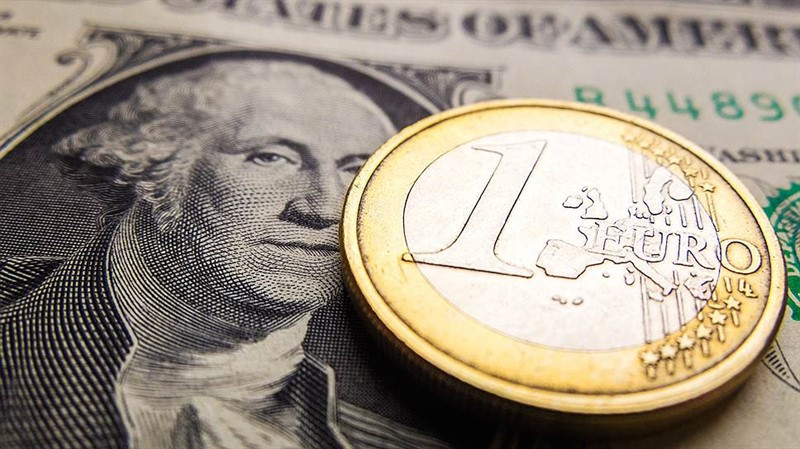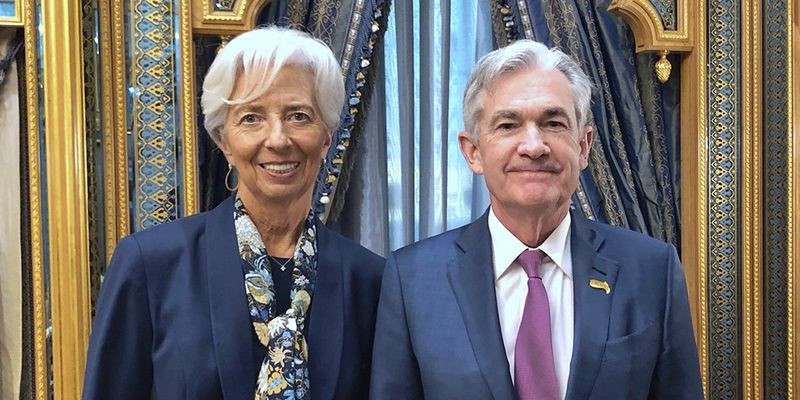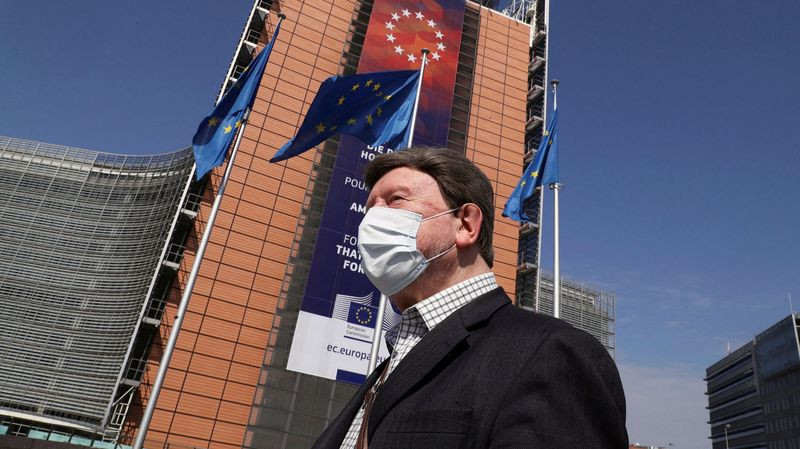
Since the beginning of July, the euro has declined against its American counterpart by about 2.5%.
As the results of a survey of global fund managers conducted by Bank of America this month showed, long positions on USD for the first time in more than three years have become the most crowded transaction on the planet.
The tougher stance of the US central bank compared to its European counterpart, as well as the threat of a global recession, forced investors to flee from risky assets, including the euro, to the traditionally considered more reliable dollar.
All this led to the fact that the greenback reached levels not seen since September 2002, and pushed the euro to $0.9952.
However, since then, the greenback has fallen somewhat in price, and although it no longer looks like a clear favorite of the foreign exchange market, investors are still in no hurry to buy the single currency.
The EUR/USD pair is trading in the range of 1.0100-1.0300 for the second week.
Market participants continue to monitor the actions of the Federal Reserve and the European Central Bank, becoming increasingly convinced that central banks are waging reverse currency wars.
It was the euro's depreciation against the dollar in July that became the key factor influencing the ECB's opinion that it is worth decisively ending the era of negative interest rates.
Recall that last week the ECB raised the cost of borrowing for the first time since 2011 and immediately by 50 basis points.
The European economy, like the American one, suffers from exorbitant inflation, the overall level of which exceeds 8%. This value seemed unthinkable a year ago for an economy that has been struggling with deflation for more than 10 years.
Given that inflationary pressures in the eurozone continue to intensify, the ECB has to make difficult decisions by reducing monetary incentives and gradually tightening national monetary policy.
An equally difficult task is facing the Fed, which has already raised interest rates by a total of 225 basis points and is trying to balance supply and demand in the economy as rates move into restrictive territory.
Both the ECB and the Fed fear that a toxic combination of high inflation and slowing growth could lead to stagflation if they deviate from the hawkish course.
At the same time, the window for raising rates on both sides of the Atlantic is rapidly closing.

Futures for the federal funds rate now put in quotes a 76% probability that the US central bank will slow down the pace of rate hikes to half a point at the next meeting in September against a 14% probability of a third consecutive rate hike by 75 basis points. The market also took into account the cumulative tightening by the end of 2022 by only 92 bps compared to 108 bps earlier.
Traders now estimate the probability of an ECB move by 50 basis points in September as about 44% versus 50% earlier this week.
The weakening of the mood regarding the ECB's next step may be due to widespread concerns about the recession, as well as the energy crisis in the eurozone.
JPMorgan believes that the ECB will raise rates by another 50 basis points by the end of the year.
The bank's analysts lowered their previous forecast, which implied an increase of 75 basis points in three parts. Now they expect a rise of 25 basis points in both September and October.
The gas crisis, along with political problems in Italy, will push the European region into a moderate recession early next year and limit the ECB's ability to raise interest rates, JPMorgan analysts believe.
"The weaker gas supplies to Western Europe, the higher the risk that the bloc's economy will plunge into recession, a scenario that could limit the ECB's ability to raise rates to counter record inflation," Western Union strategists said.
This week Goldman Sachs lowered its forecast for the European region, saying that a technical recession in the form of two consecutive quarters of negative growth this year is more likely to happen than not, even if Russia does not completely stop energy supplies. A sharper decline, according to the bank's specialists, is likely in the event of an even more serious disruption of gas flows, a repeat of the sovereign debt crisis.
Credit Suisse predicts that eurozone GDP will fall by 1-2% next year if Russian gas is turned off, and inflation will remain well above the ECB's 2% target for at least another year.
The complete cessation of gas flows may lead to rationing of energy resources, which will affect the main industries and sharply slow down growth in the euro area in 2022 and 2023," the IMF warned on Tuesday.
The reputable organization expects that without a gas shutdown, the eurozone will grow by 2.6% this year and by 1.2% next year.
The Fund's latest forecast assumes a slowdown in the growth of the American economy this year to 2.3%, and next year to 1.0%.
It is noteworthy that neither the Fed nor the ECB now give specific instructions on what to expect next. Therefore, economic data will act as a key catalyst for the movement of the EUR/USD pair for several weeks until central banks hold regular meetings.

Data released on Thursday showed that the US economy contracted again in the second quarter, as the country's GDP fell by 0.9% year-on-year last quarter after shrinking by 1.6% a quarter earlier.
Two consecutive quarters of negative growth are generally regarded as the technical definition of a recession, but the US does not adhere to such a definition.
"Significant job losses and mass layoffs, the closure of enterprises, a significant slowdown in the private sector, huge pressures on family budgets – all this will mean a large-scale weakening of our economy. However, this is not what we are seeing right now," US Treasury Secretary Janet Yellen said.
Ahead of the release of the US GDP report, the EUR/USD pair sank to 1.0115, then it was able to rebound and ended Thursday's trading in a slight negative, around 1.0195.
"The volatile market reaction to yesterday's poor US GDP data gave an idea of what we should expect in the coming weeks. The robust U.S. labor market continues to postpone the prospect of a "real" recession. From the point of view of the exchange rate, we do not see that the dollar will suffer from a much softer revaluation of the Fed's trajectory, given the current economic background – by the end of the year, policy tightening is expected by only 90 bps. The EUR/USD pair may end the current week near the 1.0200 gravity line," ING strategists noted.
The main currency pair failed in the area of 1.0250-1.0260 on Friday, after which it plunged to 1.0150, and then returned to the area above 1.0200.
Eurostat reported that annual inflation in the eurozone unexpectedly accelerated to 8.9% by the end of July, thereby updating a new historical high.

A separate report showed that the currency bloc's economy expanded by 4% year-on-year and by 0.7% quarter-on-quarter. Analysts expected the first indicator to grow by 3.4%, and the second by 0.2%.
The euro could not fully benefit from such a combination of data, since the participants of the foreign exchange market have to take into account in quotes the accumulated lag of the ECB from the Fed in terms of tightening policy.
The Fed's preferred inflation indicator, the personal consumption expenditure price index, was released on Friday, which turned out to be higher than expected and showed that the central bank has little incentive to retreat from its aggressive interest rate hike cycle.
The core PCE grew by 0.6% on a monthly basis and by 4.8% on an annual basis against the projected 0.5% and 4.7%, respectively.
"The Fed's response function is still strongly focused on inflation. In this sense, the central bank is likely to continue increasing, at least until the interest rate becomes slightly restrictive (over 3.0%), before attaching more importance to the weakening of economic activity. This may happen after the FOMC's September policy meeting, but until then, in our opinion, the US dollar is likely to remain strong," Bank of America analysts believe.
According to analysts at MUFG Bank, some of the luster has gone away from the strong US dollar, but the reasons for a more stable and deep sell-off of the USD are not yet convincing. They believe that concerns about global growth should support the US currency. In addition, the Fed's policy reversal is not yet dovish enough, analysts added.
Thus, the path of least resistance for the EUR/USD pair still lies in the downward direction.
The 1.0100 mark limits the fall so far. A breakthrough below will open the door for a retest of parity with the main bearish target at 0.9880. The pair needs to accelerate to the level of 1.0280 to get rid of the negative mood and continue the recovery to 1.0360 and 1.0450.





















